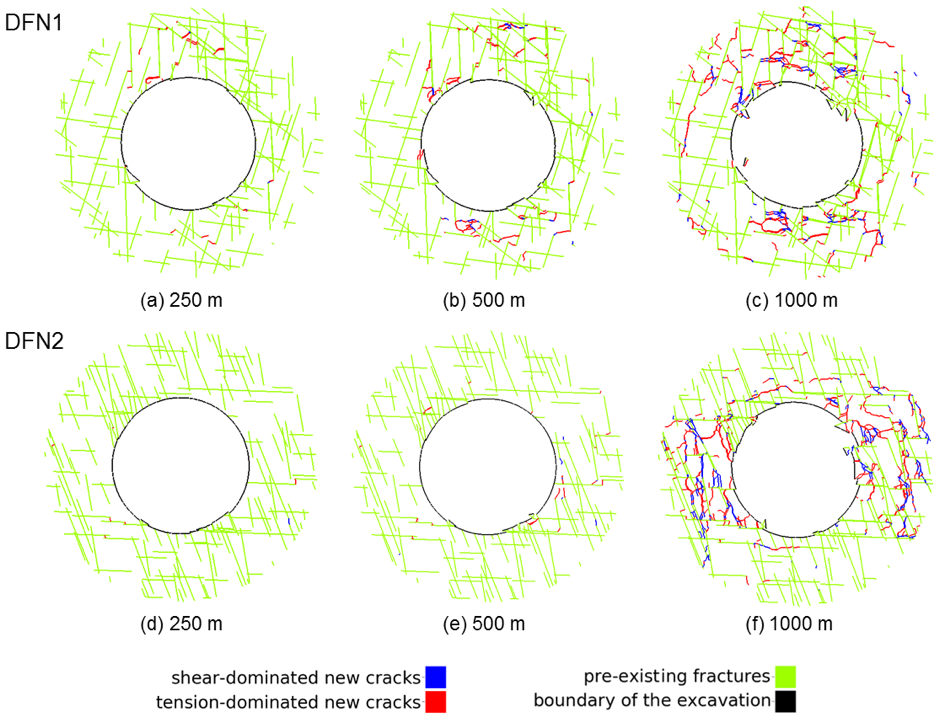Subsurface rocks embedded with naturally occurring fractures are often encountered in engineering excavations for tunnel construction, hydrocarbon extraction, mining operations, geothermal production and deep geological disposal of radioactive waste. Underground and surface excavations that reload and perturb the rock mass from an initially equilibrated geological system can engender stress redistribution and generate tension, compression and shear in different parts around the opening. Such perturbations to the in-situ stress field are expected to trigger the creation of an excavation damaged zone (EDZ), which refers to the region where irreversible deformation involving new crack propagation has developed. In the context of nuclear waste repositories in crystalline rocks, the predication of failure depth is critical for safety management during the excavation stage and/or the open-drift stage, while the understanding of EDZ properties has important implications for assessing the long-term performance involved with radionuclide migration and mineral dissolution problems.
Most EDZ studies are focused on the brittle failure of intact rocks around underground excavations. The effects of pre-existing joints/faults on the EDZ formation were recognised in the community as a bottleneck issue, but have not yet been adequately addressed.

The Solidity FEMDEM code possesses unique advantages of modelling the deformation of intact rocks, the reactivation of pre-existing discontinuities and the propagation of new cracks induced by tensile, shear or mixed-mode brittle failure. A discrete fracture network (DFN) can be embedded into the unstructured problem mesh to simulate the geometrical distribution of natural fractures. A joint constitutive model (JCM) is integrated into the FEMDEM formulation to capture the mechanical behaviour (e.g. shearing, opening and dilatancy) of rock fractures with intrinsic rough surfaces. The FEMDEM model can simulate the progressive rock mass failure around the tunnel excavation in fractured geological formations under various far-field stress conditions. The fracture development in the rock mass can be explicitly modelled and the EDZ properties (e.g. shape, extent and anisotropy) can be further evaluated as shown in the figure below. Based on the collapsed state of the rock mass, the shape and depth of the failure zone can also be determined, which offers essential information for the support system design (e.g. lining thickness, bolt length and position). The results of the FEMDEM-based EDZ research have important implications for designing stable underground openings for nuclear waste repositories as well as other engineering facilities that are intended to generate minimal damage in host media.

Publications
Lei Q, Latham J-P. Progressive rock mass failure around an underground excavation in a geological formation with discontinuities: A numerical study. Int J Rock Mech Min Sci (Under review)
Lei Q, Latham J-P and Xiang, J. Implementation of an Empirical Joint Constitutive Model into Finite-Discrete Element Analysis of the Geomechanical Behaviour of Fractured Rocks”, (In Press, Rock Mechanics and Rock Engineering).
